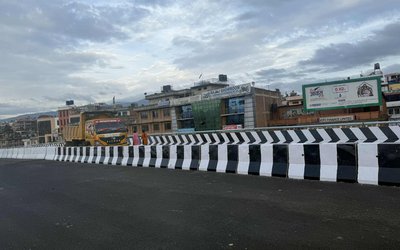An architectural arrangement inside anything from a small house to a large commercial building of all kinds is known as interior designing. It is all about using creativity and technical skills within an area to make it more attractive and functional as per the client’s wish. Interior designing is the arrangement of living space, organizing, managing, planning and decorating the interiors of rooms, homes, offices, retail shops, showrooms, hotels and many more commercial establishments. Interior designing generally seeks to harmonize every change the space will go through.
There are different types of interior designs in common such as, residential design, commercial design, hospitality design, healthcare design, universal design, exhibition design, spatial branding etc. The profession of Interior Design is relatively new, constantly evolving, and often confusing to the public.
Interior designing is not simply a profession that makes room and places pretty; it takes a little bit more than that. Some technical things like creativity, a delicate but an important quality to have when considering interior designing as profession, is an obligation. Along with creativity, communication skills, visualizing how it will look at the end, are very important factors. Interiors are more than a ‘living space’ because they are an identity to one’s culture. Though the styles of decoration and the items utilized may differ according to the community and the culture; Nepalese community show a keen interest in decorating their spaces.
The Narayanhiti Palace Museum, at Narayanhiti Durbar (formerly Narayanhiti Royal Palace), was constructed under the desire of the Shah King in the 18th century and was destroyed by an earthquake in 1934. It was rebuilt in a contemporary style in the 1960s on the design of Benjamin Polk, an American architect. For centuries the Narayanhiti Palace stood as a symbol of royalty.
Nepali homes have always been rich in interior designing decorations. The need for interior designing was rare, but a necessity, in Nepal since a decade back when the luxurious interiors of Rana palaces built in the past showcased ideas borrowed from the west; and the Malla palaces on the other hand, displayed extraordinary craftsmanship. They were not the works of interior design, but rather an expression of what the owners felt. It is for the fact that people treated their spaces what they visualized, whether or not it fit the context.
The new generation of Nepalese architecture is integrating the traditional textures of the Kathmandu valley’s Newari architecture into new designs. This combination of culture, tradition and modernity has not only helped conserve uniqueness of Kathmandu but has also resulted in affordable, elegant and visually pleasing buildings. Interior designing is not just decoration of the interior space but it involves aspects of architecture too.
In ancient India, architects used to work as interior designers. This can be seen from the references of Vishwakarma, the architect, one of the Gods in Hindu mythology. Additionally, the sculptures depictingancient texts, events are seen in palaces built in 17th century India.
‘Interior decorating’ usually focuses the interior items, but ‘interior design’ is a more multidimensional task of handling the architectural integrity of the interior space skillfully. Today, interior designing is sought mostly in commercial areas than in the residential areas. Taking the example of malls, shopping complexes stood inside Kathmandu valley, completely decorated with extraordinary designs and themes chosen so that more customers visited there. But, there still exist the traditional shops which have been there for decades and have no such designs. They simply decorate their shops on the special occasions like deepawali, durga pooja and other remarkable times. Nevertheless, the profession is progressing within the past few years though it is limited to certain dimensions; like the effect of the education available on interior designing. As a trade or as a profession, interior designing is very new to Nepal.
The scope of interior designing is growing at a rapid rate. Firstly, the people in Nepal have begun to realize the need and importance of creating beautiful indoor spaces. Secondly, people in Nepal today live a competitively luxurious life. Anybody is not ready to be dominated by the others in terms of reputation which is directly or indirectly reflected by their layout and the placement of their interiors. Moreover, the combination of western skills and Nepalese culture has led to the mind blowing scenario.
The quality of education in interior designing varies greatly between Nepal and abroad. India is the closest place for study outside Nepal. It provides various students obtain a chance to integrate more into the global scenario. The belief that study abroad is better is a predominant criterion for the people who choose Nepal for the interior designing courses, even if those colleges in the nation are the affiliated with one or other institution abroad. Many institutions in Nepal run allied programs usually to sustain, where bachelor’s in business administration, bachelor’s in hotel management and design are common. Some of these colleges affiliated to interior designing institutions outside Nepal claim to have their curriculum set by the main institute abroad. Moreover, Kantipur College of Hotel management and Interior design, an institute affiliated to Purvanchal University, is the only institute recognized by a national university.
To become an interior designer, specific assignments such as interior design, drawing and computer-aided design (CAD) along with a bachelor’s degree in almost any field are usually required. There are also over 300 colleges and universities in the USA that offer programs in interior design and more than 150 professional level interior design programs. There are also specific licensing requirements for interior designers depending on the state. In order to take the exam, one most often has to have a bachelor’s degree plus 2 years’ experience. The National Council for Interior Design Qualification (NCIDQ) exam is the most common qualifying exam that’s available and one who passes it may be registered as an interior designer.

Ritisha Khanal
Khanal is an intern
- All For Education
- Jul 14, 2013















